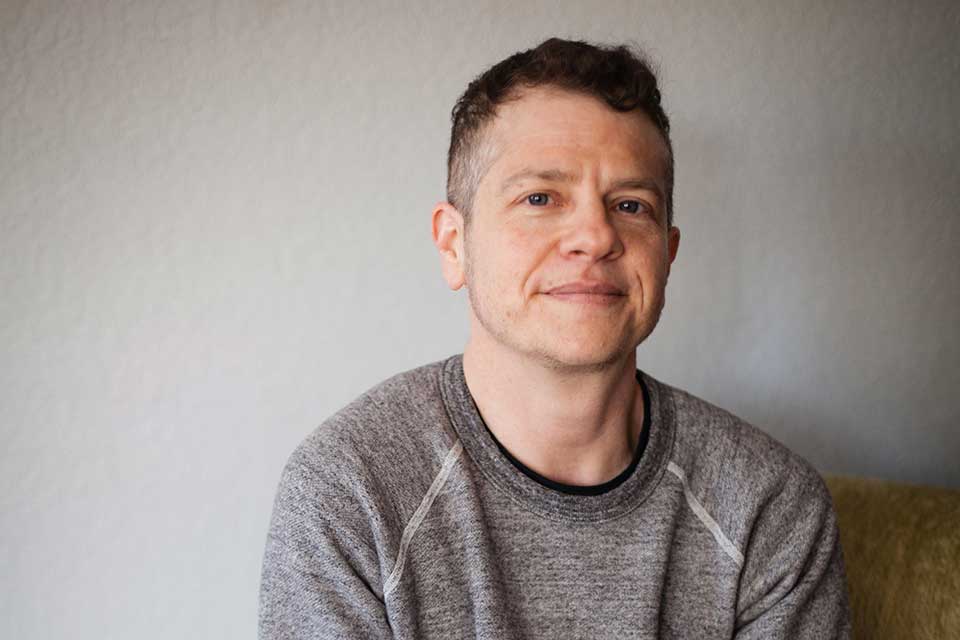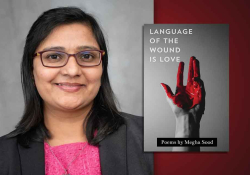“Imagining More Transgender Visibility in Translation”: A Conversation with Ari Larissa Heinrich

Ari Larissa Heinrich is the translator of Qiu Miaojin’s Last Words from Montmartre (New York Review Books) and Chi Ta-wei’s The Membranes (forthcoming from Columbia University Press). They are a professor of Chinese literature and media at Australian National University.
Veronica Esposito: Although transgender activism in the modern era dates back at least to the nineteenth century—and evidence of transpeople has been found at some of the oldest human settlements on Earth—it’s become popular to talk about how the transgender community has “come out” in recent years. And while it is true that we have expanded our visibility and the visibility of our fight for equal rights, one area where this expansion seems to be lacking is in the world of translated literature. I, for one, rarely see trans protagonists, or even characters, despite their increasing normalization in other media like TV, movies, and even nontranslated literature. Why do you think this is?
When you treat the act of translation metaphorically, you take on the burdens of metaphor’s collateral vocabulary.
Ari Larissa Heinrich: Perhaps one reason we don’t yet see many trans protagonists in translated literature is that the definition of trans itself, as part of our “target language,” is in flux. As translators, if we read contemporary understandings of trans backward in time, as well as across linguistic and cultural differences, do we then risk committing a “trans translation fallacy”? That risk, plus the tendency in popular culture (and in our case the tendency in the “target” language of contemporary American English) to always make trans a metaphor for something else, can make translating extra tricky. How to do it sensitively, accurately, respectfully? Which pieces do we choose, knowing they may become representative of larger groups?
Personally, I’m always tempted to say we’re putting the “trans” back in “translation” when we talk about increasing trans visibility in translated literature. But I also think we should pause before using this phrasing uncritically. When you treat the act of translation metaphorically, you take on the burdens of metaphor’s collateral vocabulary. So, for example, if our goal is to put the “trans” back in “translation,” then what do we do with the rigid binaries of concepts of “source” and “target” language (and what would that imply about the existence of an “original” gender?)? In addition to everything else, trans translators and our allies also have to be mindful of exactly which binaries (both concrete and abstract) we are working with when we bring trans from one literature to another.
Along similar lines, when translating trans, I also feel we need to add the diversity of trans* experience into our calculus. Do we treat transmasculinity and transfemininity as fundamentally commensurate—which I think the “bundling” of the terms together risks doing, and often does—and if so, what are their logics? Or does it make sense to speak of gender as a kind of false cognate? Do transmasc and transfemme and nonbinary experiences belong in the same conversation? Does the way we put these terms in proximity to each other in contemporary English do them justice?
When translating trans, I also feel we need to add the diversity of trans* experience into our calculus.
Esposito: What would you consider to be foundational works in transgender international literature, works that might provide inspiration and sustenance as we look toward what may come?
Heinrich: Although it probably hasn’t been thought of as “transgender” literature per se, I’d include Cao Xueqin’s eighteenth-century classic, The Story of the Stone (also commonly known as The Dream of the Red Chamber), especially in David Hawkes’s translation, which renders it pitch-perfect in a kind of Jane Austen-ish tone. That book alone is probably responsible for getting me (and many others) into Chinese literature. Apart from being one of the best-loved works of Chinese literature of all time, The Story of the Stone treats its gender-diverse characters with great tenderness. Its main character is a sensitive boy with a special appreciation for femininity, and the book describes his relationships with the people around him very sympathetically. It includes lots of what we could retrospectively categorize as gender and sexual diversity.
Esposito: What works and/or authors do you believe indicate the kind of vitality and necessity that we’d want to see more of from LGBTQ+ international literature?
Heinrich: This is a hard question, precisely because of the Catch-22 you point out about limited availability of translated works with trans protagonists. If I may take a slightly unorthodox approach, I’d say for the purposes of this discussion we could expand our understanding of translation to include works where the source and target languages may seem to be the same (or at least highly commensurate, such as Australian, Canadian, and American Englishes) but where the extralinguistic components of the works necessitate a kind of trans-focused cultural translation.
I love anything by the Arab Canadian poet Trish Salah. Her Wanting in Arabic may be especially relevant here; her Lyric Sexology breaks me into little pieces every time I pick it up. Something that I love about both books is how they raise the question (at least for me) of the potentiality of (trans) translation—how they explore what can lie at the heart of someone’s desire to “translate” at all (and for that matter what it means to “know” another language, or want to know one, or to exist in the linguistic in-between).
In a similar spirit, I’m excited to read McKenzie Wark’s Reverse Cowgirl (whenever the book passes through the epistolary purgatory that is Melbourne mail in the pandemic), because maybe it too could be broadly construed as “translational” in its tracing of a life from Sydney to New York in a period coinciding with two decades of media-cultural supernova, and its conclusion (per description) “in a space of utopic self-invention.”
I also appreciate Paul Preciado’s essay “An Apartment on Uranus,” itself translated from the French, which I read as providing a kind of, um, tongue-in-cheek (sorry) trans or nonbinary answer to A Room of One’s Own.
Esposito: One of the reasons I wanted to interview you for this series is that you’re one of the few working transgender translators in the English-language world that I’m aware of. In your own literary practice, you’ve brought a trans-informed reading to your translation of Qiu Miaojin’s queer novel Last Words from Montmartre, and you have a forthcoming translation of Chi Ta-wei’s The Membranes, which is possibly the first novel in modern Chinese to feature a transfeminine protagonist. It’s great that there is room for work like this and others in translated literature, but it often seems like this is just a drop in the translation bucket. What do you think would help bring about more transgender visibility in the world of translated literature?
Heinrich: Ideally, we need more translated literature featuring trans and nonbinary characters, created and/or translated by trans and nonbinary writers and translators, and witnessed or supported as part of larger decolonial and antiracist projects. This may include authors, translators, and even characters who are not, or not yet, trans-identified. I translated Qiu Miaojin’s Last Words from Montmartre while I was “transitioning” (even if I personally find that term somewhat limiting). But I wouldn’t say that my transness informed the translation directly; if anything I’d say the opposite, namely, that Qiu’s work provided me with nonjudgmental and intimate company during an especially eventful period in my engenderment.
In concrete terms, ways to increase transgender visibility in translated literature might include targeted workshopping for translators, financial assistance, publishing incentives, and dedicated editorial support. And of course the topic of trans translation—in all its complexity—should be included in classes on literary translation. I’d love to see more works of trans translation of various configurations included in high school and university literature curricula, too.
Esposito: Could you tell us a little about The Membranes and why you wanted to translate it?
Heinrich: The Membranes is a work of speculative fiction that came out in Taiwan in 1995. The author, Chi Ta-wei, later became one of the best-known writers of queer fiction and criticism in the Chinese-speaking world. The book is considered a classic among queer and more mainstream literary circles alike. It paints a sensitive portrait of one young woman’s quest for self-understanding in the wake of climate devastation and infinite war. The effect is literate and sublime, a kind of hybrid, punk sensibility. Particularly satisfying is that The Membranes predicts the future (otherwise known as “today”) with uncanny accuracy: everything from fitness-tracking to the consequences of the unholy union between social media and surveillance technology.
In recent years there has been a kind of vogue for Chinese speculative fiction in translation—I’m thinking of works like Liu Cixin’s 2014 The Three-Body Problem or Hao Jingfang’s 2015 Folding Beijing, both of which won Hugo Awards. I welcome that vogue but also want anglophone readers to get a sense of the diversity of voices—including queer ones—that populate the speculative fiction sinosphere. In that respect, The Membranes is essential reading.
Esposito: If there were much more transgender visibility than currently exists in the translation field, how would the field be different?
Who wins when we establish hard boundaries between male and female, human and animal, nature and artifice, biologic and geologic?
Heinrich: Imagining more transgender visibility in translation is inseparable for me from a utopic imagining that foregrounds race, class, animal, and environmental liberation. When I imagine more transgender visibility in translation, I see literature that is inclusive of an expanded idea of “trans.” Lately, for instance, I’ve been on a bit of a Kathryn Yusoff bender, particularly her short monograph A Billion Black Anthropocenes or None. Yusoff closes the book by stating: “No geology is neutral.” Even if she didn’t intend it, I read the work almost like a kind of trans manifesto, and this line in particular as a play on the idea of “neuter” as a null set for both gender and genre. Who wins when we establish hard boundaries between male and female, human and animal, nature and artifice, biologic and geologic?
Maybe greater transgender visibility in the field of translation would therefore look something like the world imagined in N. K. Jemisin’s incredible Broken Earth series—a world where geology has a new kind of agency and where, uncoincidentally, trans and gender-diverse characters appear as a matter of course. It’s a world where transfeminine figures aren’t represented only as victims of violence or agents of infiltration; where transmasculine figures aren’t built on scaffoldings of pathology and abjection; and where nonbinary figures never need to justify their own existence.
October 2020
Editorial note: This is the eleventh in Veronica Esposito’s monthly series, En Face: Conversations on the Future of Translation, which will run throughout 2020. Her conversation with Margaret Jull Costa is in the Autumn 2020 issue.















